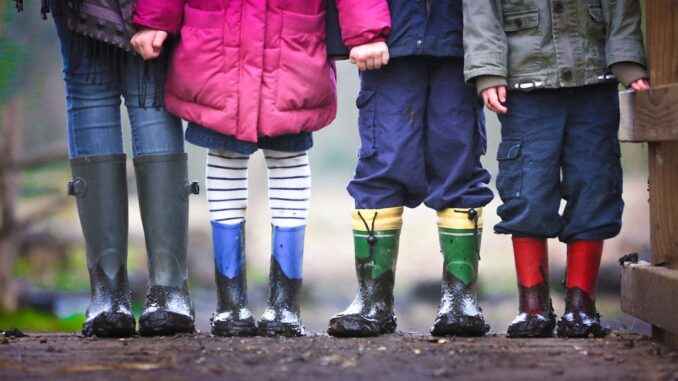
Summary
This article discusses a new course developed by researchers at Western University to increase physical activity levels in childcare centers. The course aims to address the issue of childhood inactivity, but initial studies show it may not be enough on its own. Multi-component interventions may be necessary to significantly improve activity levels in these settings.
Main Story
Okay, let’s talk about kids and getting them moving, something I think we can all agree is super important. You know, childhood obesity is a real issue and one big piece of the puzzle is the lack of physical activity among our little ones. That’s where those awesome researchers at Western University come in. They’ve developed this course specifically for early childhood educators (ECEs), because, let’s face it, childcare centers? They’re a huge opportunity to make a difference.
The idea behind the course is simple, but powerful: arm ECEs with the knowledge and tools they need to get those kids active throughout the day. Imagine, instead of the usual sedentary scenes, kids running, jumping, and playing! It’s not like we are talking about something trivial either, studies are showing that kids can spend up to 60% of their time in care just sitting! Crazy, right?
So, this course covers all the bases. We’re talking age-appropriate activities, ways to sneak movement into daily routines, and how to create play spaces – both inside and out – that are, well, irresistible. The whole point? To help ECEs create this culture of movement, instilling healthy habits early. I mean, that is really what it’s all about, isn’t it?
Now, here’s the kicker, or should I say, the slightly disappointing part. They did this cool study – a cluster randomized controlled trial (try saying that three times fast!) – involving 12 childcare centers in London, Ontario. They had 145 preschoolers and 42 ECEs. The ECEs in the intervention group took a 5-hour online course about physical activity but, surprisingly, the researchers didn’t see any real increase in the kid’s activity levels. There was no statistically significant change. No increase in moderate-to-vigorous physical activity. No increase in light intensity movement. And, yep, no decrease in sedentary time.
This really drives home the point, doesn’t it? That simply educating the ECE’s, while critical, isn’t the magic bullet. It’s a piece of the puzzle, sure, but it’s not the whole thing. It’s sort of like trying to bake a cake with only half the ingredients, it’s going to be… well… disappointing. What’s needed, then? A more multi-pronged approach.
Think more resources for the centers – things like age-appropriate equipment, activity guides, the works. Think about getting parents involved too. Making active lifestyles a family thing, not just a childcare center thing. A supportive environment, both in school, and at home. That’s when we see true change. I remember, years ago, I tried to start a running group at my company, nobody was interested until we started posting our activities and the pictures on socials, then everyone wanted in. That’s the sort of engagement needed, it’s got to be a cultural shift.
Experts, and quite rightly so, recommend that preschool kids should get at least 15 minutes of physical activity for every hour they’re in care. That mix should include structured and unstructured play. That way, they get to develop those vital movement skills, and more importantly, create positive memories around physical activity. It isn’t all about preventing health issues down the line, though. Movement helps their cognitive, social, and emotional development too. It’s how they explore the world and gain self-confidence. Think about it; playing gives them the chance to explore, be creative, and develop things like coordination, balance, and even spatial awareness. Seriously, it’s so vital!
And so, as more research is done, it really is going towards these multi-layered approaches. Working with the ECEs, providing ongoing support, getting the families on board. Create a whole collaborative network! By doing this, we can create spaces where children not only survive, but also thrive. Its amazing to see the advancements that have been made in pediatric care. It’s promising to see and honestly gives me hope that, hopefully, these kids can be as healthy as possible for many years to come.


Ah, the magic of a 5-hour online course that promises to solve childhood inactivity, but turns out to be more of a disappearing act than a game-changer. Seems like our little ones need more than just an ECE crash course to get moving. Perhaps we should throw in some kid-sized treadmills and mini fitness trackers while we’re at it? Or maybe, just maybe, it takes a village—and a robust multi-component strategy—to raise an active child.